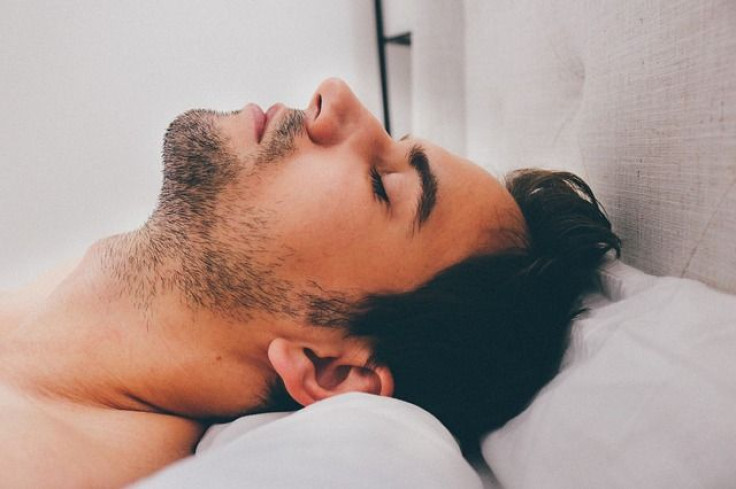Trouble Sleeping In A New Place? Higher Activity In Left Brain During Deep Sleep May Be To Blame

Whether we’re at a hotel on vacation, over at a friend’s house, or living in a new place, sleeping in an unfamiliar bed is always difficult on the first night. We begin to get restless as we toss and turn and manage to get just “light sleep.” A recent study published in the journal Current Biology suggests this “first-night effect” could be a sign that our left brain is working hard to protect us from danger.
"The first-night effect may be associated with a protective mechanism which monitors unfamiliar surroundings, wakes the humans from deep sleep if necessary so that humans could respond to external signals," Masako Tamaki, lead author of the study from Brown University in Providence, R.I., told Medical Daily.
In marine mammals and birds, this type of partial sleep is a protective mechanism that helps compensate for risks that arise during sleep. Several studies show this state of lighter sleep allows these animals to monitor their environment and detect predators. In addition, marine mammals exhibit an alert state in one part of the brain, presumably because they regularly need to resurface to breathe, even during sleep.
Tamaki and her colleagues sought to understand why sleep is often noticeably worse on the first night than on the second night in a new location by observing the brain activity of 35 healthy young participants during two consecutive nights repeated and spaced one week apart. The participants did not report having any anxiety over the surveys, and were screened to ensure their sleep quality was typically normal. Usually in clinical sleep studies, researchers factor the first night of an experiment with an “adaptation night,” but this time they decided to include it as part of the analysis.
Using electroencephalography, magnetoencephalography, and magnetic resonance imaging, the researchers developed unusually high-resolution and sensitive measurements with wide brain coverage. This would allow them to see whether one brain hemisphere has higher activity during the first-night effect in slow-wave sleep, or deep sleep. Slow-wave sleep consists of non-REM sleep stages 3 and 4, and is believed to play an important role in cerebral restoration and recovery in humans, and to be involved in the maintenance and consolidation of sleep. On the first night in the lab, the researchers tested four brain networks, including the default-mode network (most active when the brain is at rest), the attention network, the sensorimotor network, and the visual network to measure slow-wave activity.
The findings revealed on the first night, the default-mode network in the left hemisphere remained more during slow-wave sleep. Researchers stimulated the left hemisphere with irregular beeping sounds played in the right ear, which prompted a significantly greater likelihood of waking, and quicker response to external stimuli, than when played in the left ear to stimulate the right hemisphere.
Although the researchers didn’t determine why the left hemisphere showed an increase in vigilance during slow-wave sleep, they propose two possibilities.
"The first is that functional connectivity between brain regions are stronger in the left hemisphere. The stronger connectivity may be useful for a night watch,” said Tamaki.
Since the research team only measured brain activity during the first sleep cycle (the first 90 minutes of sleep), it’s possible the left hemisphere is vigilant during the first sleep cycle, and that hemispheres alternate in vigilance with different cycles. For example, in the next 90 minutes, the right hemisphere may play a role as a night watch.
No difference was observed between brain activity and other sleep cycles on the first night. On the second night, there was no significant difference found between left and right hemisphere even in the default-mode network of the left hemisphere.
"To our best knowledge, regional asymmetric slow-wave activity associated with the first-night effect has never been reported in humans," wrote the authors.
Dr. Fran Walfish, Beverly Hills psychotherapist and author of The Self-Aware Parent, believes a change in environment affects our mood because as human beings, we’re neurologically wired.
“When we feel at risk of danger, our neurological systems, bodies, and moods react defensively on-guard to protect one with a response of fight or flight (running away), depression, anger and attack, and even a dissociative out-of-body experience,” she told Medical Daily.
Feelings of uncertainty over sleeping in a new place can manifest itself in a series of signs or cues. This could range from increased rapid heartbeat to constriction and tension in the muscles. According to Walfish, most panic attacks occur when the person lets their guard down and relaxes, which is when their genuine feelings arise, whether they be of relaxation or fear. Panic and feelings of anxiety can be ticked off by sound, temperature, feeling of mood in the room, space, a noise, or a memory.
While the current study did not examine body postures, during the first-night effect, the participants did show frequent awakenings, and woke up faster to tap their fingers or otherwise respond behaviorally to rare sounds.
The findings warrant further research, but do suggest humans, marine mammals and birds may share a common function when it comes to the activity of brain hemisphere activity and sleep as a night watch to protect the sleeper from potential dangers. Tamaki suggests this could also be used as an insomnia model for further research.
Meanwhile, for those of us who struggle to get shut-eye in a new bedroom, take into account the physical space, temperature of the room, and how factors in the room contribute to making you feel safe and secure.
Walfish suggests, “If you feel safer and more secure in a smaller space where you feel protected with self-defense tactics, try sleeping with a can of hairspray on the floor at your hand’s reach.”
Source: Tamaki M, Bang JW, Watanabe T et al. Night Watch in One Brain Hemisphere during Sleep Associated with the First-Night Effect in Humans. Current Biology. 2016.



























